Florida Front Garden Ideas: Transform Your Outdoor Space
Getting your front garden in Florida to look beautiful and unique can be a rewarding endeavor. The vibrant climate allows for a variety of plants and features that can make your front yard stand out. Imagine a garden that not only adds curb appeal but also brings a sense of peace and tranquility to your home.

With the right ideas, you can transform your space into a stunning outdoor area that reflects the sunny and tropical vibes of Florida. Your front yard can become a welcoming entrance that impresses guests and provides a refreshing view every time you come home.
1) Plant Florida-native wildflowers

Adding Florida-native wildflowers to your front garden brightens up the space and attracts pollinators like butterflies and bees.
Consider planting Butterfly Milkweed, which has gold or orange blooms and thrives in full sun conditions.
Another great choice is Coreopsis, Florida’s state wildflower, which blooms primarily in the warmer months here.
These native plants require less water and maintenance, making your garden beautiful and eco-friendly.
2) Create a Butterfly Garden

Building a butterfly garden in your front yard is a wonderful way to attract these beautiful creatures.
Start by choosing a sunny spot; butterflies love the warmth.
Plant nectar-rich flowers like milkweed and pentas.
Add some rocks or pavement to absorb heat.
Also, include some water sources like shallow dishes with stones.
This creates a perfect haven for butterflies.
3) Install a water feature

Adding a water feature to your Florida front garden can make your space more inviting.
Consider a bubbler fountain for a small, quiet corner. These fountains bring both charm and a sense of calm.
For a bolder touch, a modern garden pool can serve as a striking focal point. Line it with lush plants to enhance its beauty.
4) Use Weather-Resistant Outdoor Furniture
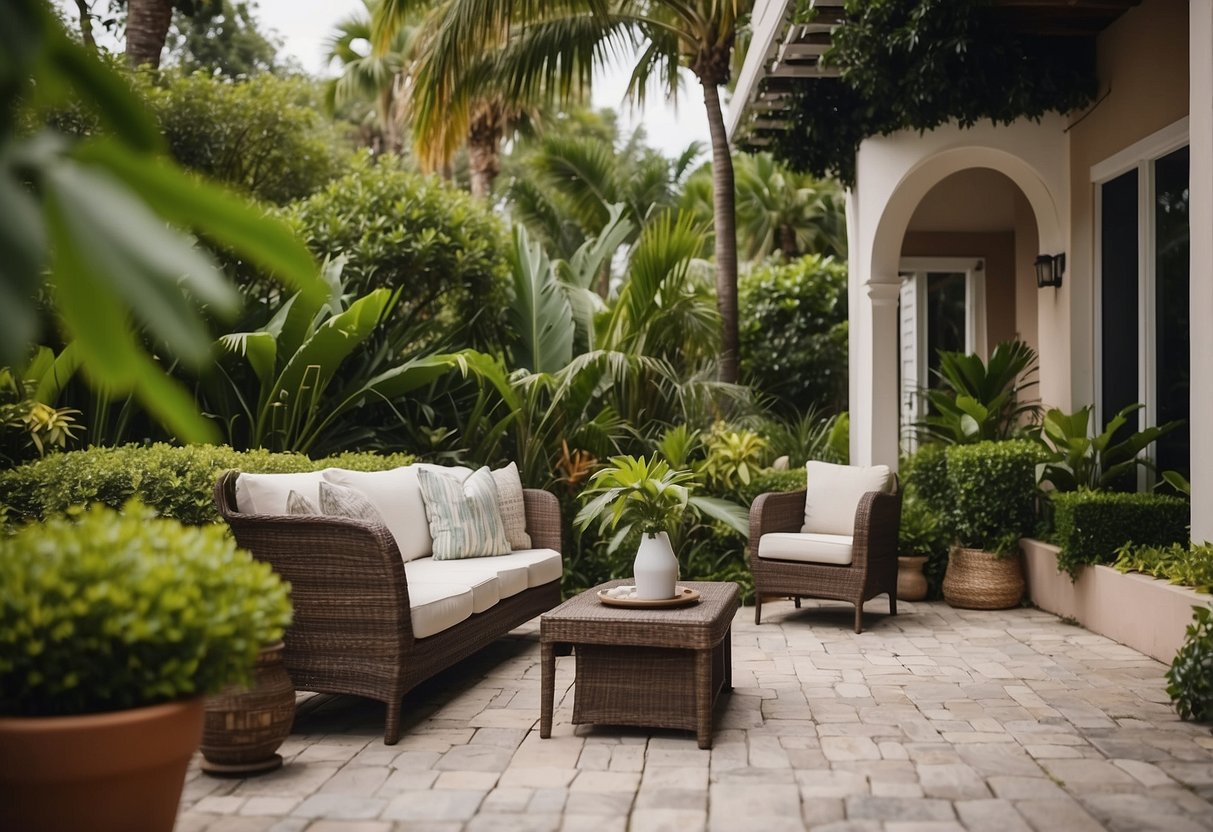
Adding weather-resistant outdoor furniture can really spruce up your front garden. Look for pieces made from materials like wicker or Sunbrella fabrics. These materials handle Florida’s harsh sun and frequent rain well.
A modular sectional set can provide both style and comfort for your outdoor space. Try a modular wicker set to create a cozy seating area. Adding such furniture helps you enjoy your garden while ensuring it lasts a long time.
5) Grow tropical plants like hibiscus
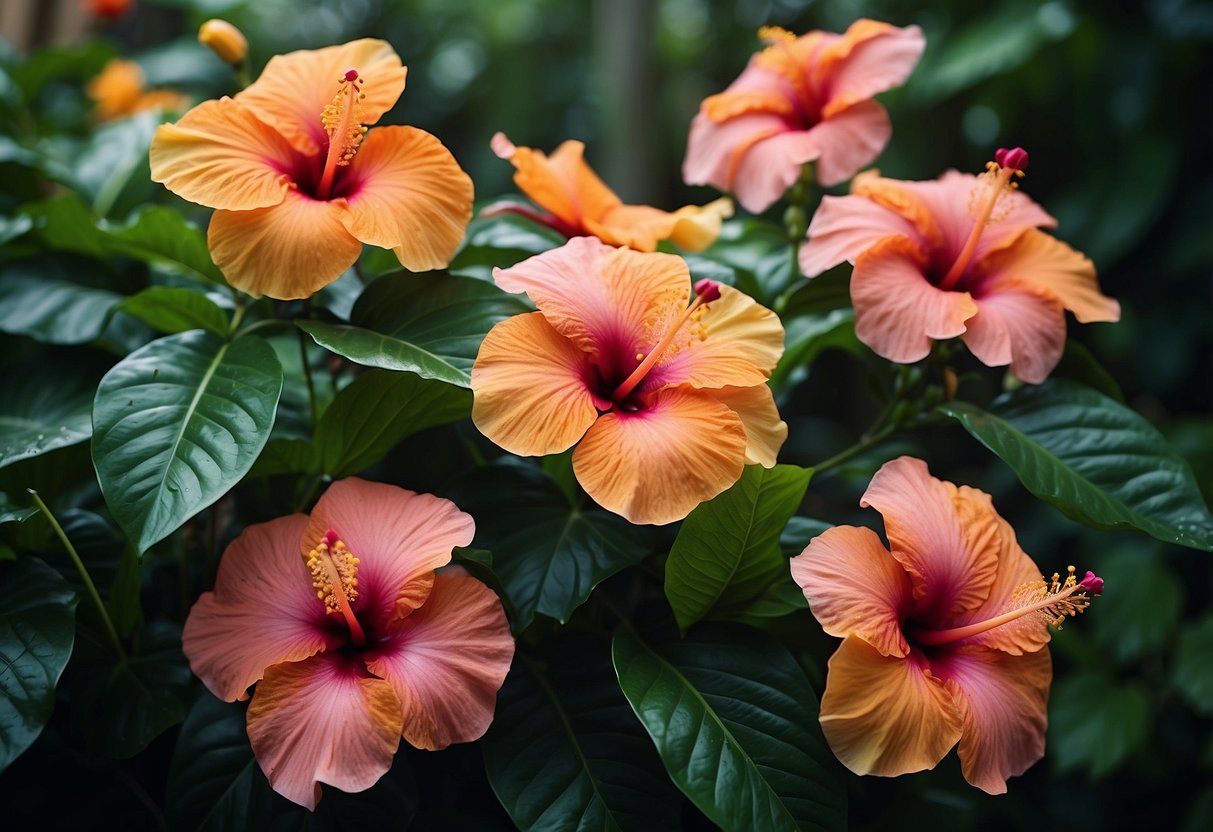
Adding tropical plants to your garden can make it look vibrant and welcoming. Hibiscus is a great choice because of its large and colorful flowers.
Hibiscus plants grow well in Florida’s warm climate. They can handle the heat and produce stunning blooms throughout the summer.
Plant hibiscus in a sunny spot with well-drained soil. Make sure to water them regularly and feed with a balanced fertilizer for the best results.
6) Incorporate Palm Trees

Palm trees can make your front yard look like a tropical paradise. They’re great for creating shade and adding some green life to your space.
For a formal look, plant two pygmy date palms on either side of your entrance. You can also mix different species, like foxtail palms, to achieve a visually interesting display.
Adding uplights to your palm trees will highlight their structure at night, making your yard look impressive even in the dark. Remember to space taller palms, like Queen or Royal palms, a few feet apart to let them stand out effectively.
7) Add a cozy garden bench
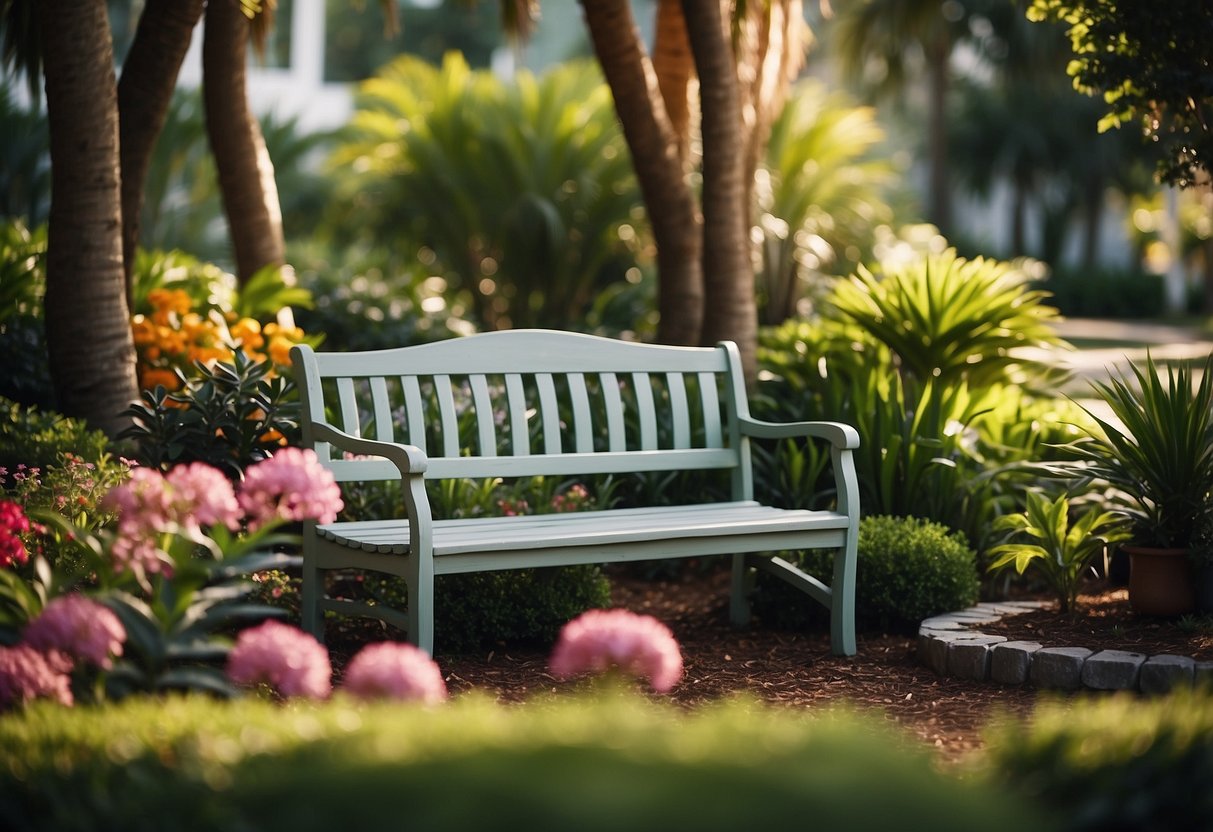
Adding a cozy garden bench can transform your front yard into a welcoming space. Consider a convertible design that offers multiple functions. This can maximize your yard space.
Choose materials that match your home’s style. A wood and metal bench can create an elegant look. Add cushions for extra comfort.
Placing your bench near flowers or under a tree provides a perfect spot to relax and enjoy your garden.
8) Mulch with organic materials
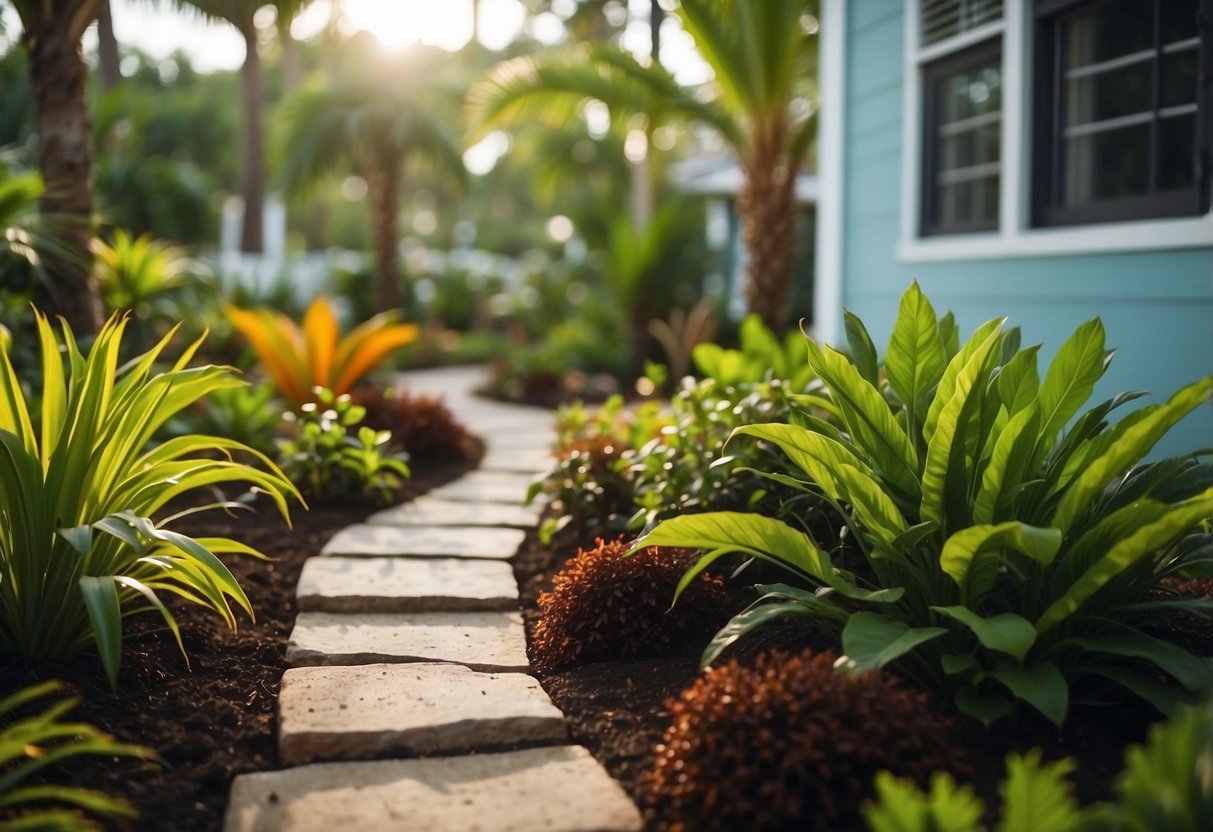
Using organic mulch in your Florida front garden can be very beneficial. Mulch helps retain soil moisture, suppresses weeds, and provides nutrients as it breaks down.
You can choose from options like pine bark nuggets, pine straw, and compost. Pine bark nuggets last for a few years and enrich your soil.
Compost is another great choice. It builds soil structure and suppresses weeds effectively. It’s also one of the most affordable mulches.
Pine straw is natural and breaks down over time, adding nutrients to the soil. Consider these options to keep your garden healthy and looking good.
9) Design a succulent rock garden
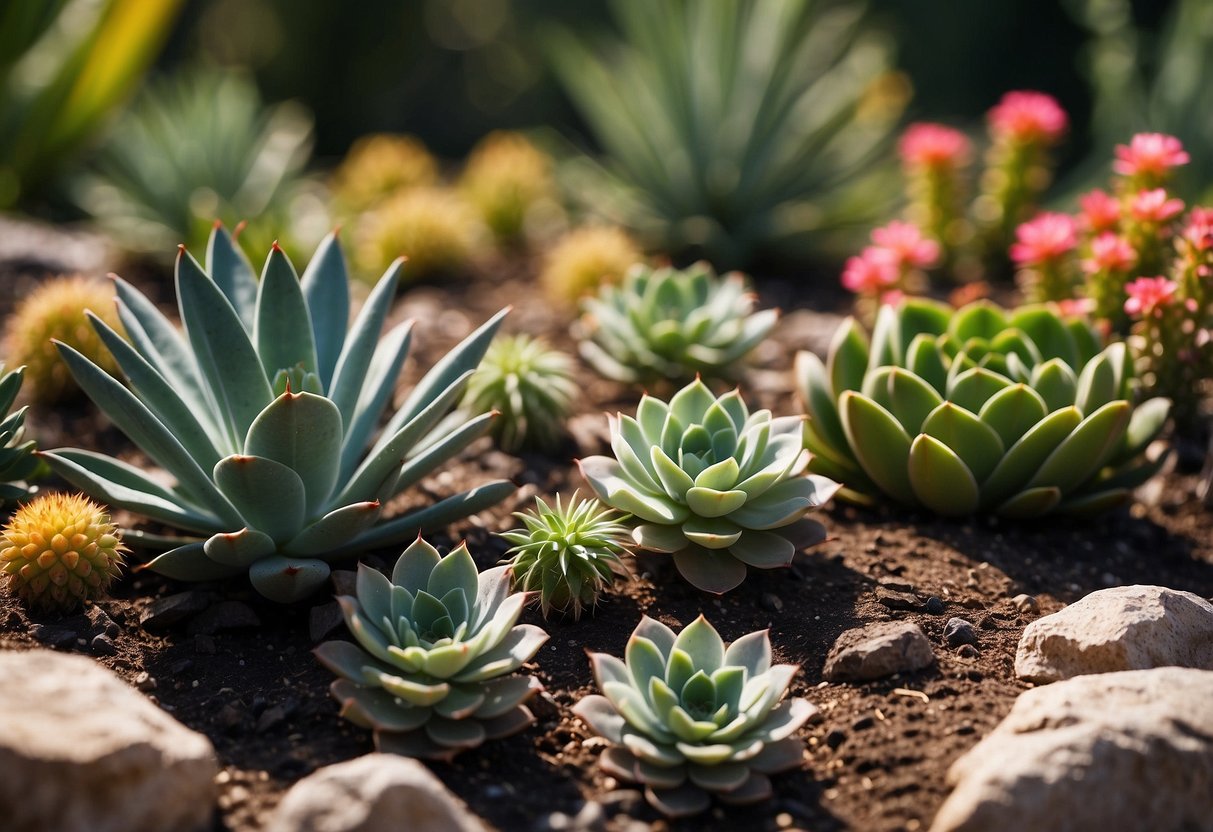
You can add variety and beauty to your front garden by designing a succulent rock garden. Use stacked rocks to add height to a low-growing succulent display. Placing large, flat stones around the succulents adds color and texture.
Mix different-sized rocks and succulent species to create visual interest. Arrange taller plants towards the back to frame the area. This combination of rocks and vibrant succulents will transform your space into a stunning landscape. Learn more about creating a succulent rock garden from these succulent rock garden ideas and front yard succulent garden ideas.
10) Implement a Garden Lighting Setup

Garden lighting can transform your front yard into a magical evening space. Start with practical lighting, like path lights, to ensure safe navigation. You can use shepherd hook festoon lights to add charm along walkways.
Think about highlighting specific features. Uplighting trees and shrubs creates dramatic shadows. Consider adding LED lights for their energy efficiency and long-term cost savings.
Designing Your Florida Front Garden

Creating a Florida front garden involves selecting the right plants for the climate and designing a layout that boosts curb appeal. Using native plants and incorporating visual elements can make a big difference.
Choosing the Right Plants
Florida’s warm climate requires plants that thrive in heat and humidity. Palm trees, pines, and oaks are excellent choices for their resilience and low maintenance. Succulents are also great; they are hardy and need little water.
Consider using mulch to retain soil moisture and reduce evaporation. Mulch also adds a clean, finished look to your garden. Transitional plants that change in height or texture can create a sense of depth and continuity.
Ornamental grasses and flowering plants like hibiscus or bougainvillea bring color and texture. These plants withstand Florida’s conditions well and can make your garden visually appealing year-round.
Maximizing Curb Appeal
Designing your garden with curb appeal in mind involves more than just plants. Think about adding pathways, such as using paved sections or rock formations, to guide the eye and create a sense of order.
A water feature, like a fountain or pond, adds tranquility and attracts wildlife. This can make your front yard a relaxing retreat. If you have the space, adding a mixed forest look with palm trees, pines, and oaks can create a natural, inviting atmosphere.
Incorporating elements like smooth plaster walls, entry gates, or arbor structures adds architectural interest. These features can enhance privacy and create charming focal points that draw attention and elevate the overall design.
Creating a Water-Wise Garden

Creating a water-wise garden in Florida not only saves water but also ensures your plants thrive in the hot climate. The key is choosing drought-tolerant plants and implementing efficient irrigation solutions.
Drought-Tolerant Plants
Selecting drought-tolerant plants is crucial. Some excellent choices for Florida include Santolina, Lamb’s Ear, Lavender, and Russian Sage. These plants have silver or gray foliage, which helps them tolerate dry conditions and intense sunlight.
Succulents like Agave and Aloe are perfect for water-wise gardens. They store water in their leaves, making them ideal for Florida’s tough summers. You can also add native grasses and wildflowers for a colorful touch.
Create layers in your garden with different heights. Mix taller plants like Palm Trees with lower ones like Florida’s native groundcovers. This not only conserves water but also adds visual interest. Remember, grouping plants with similar water needs makes it easier to manage irrigation.
Efficient Irrigation Solutions
Efficient irrigation is essential for a water-wise garden. Drip irrigation systems are great because they deliver water directly to the plant roots, reducing water waste. They also minimize evaporation, especially during hot Florida days.
Another effective method is using soaker hoses. These hoses slowly release water, ensuring deep penetration into the soil. It’s a simple yet effective way to keep your garden hydrated.
Rainwater harvesting can also be beneficial. Setting up rain barrels to collect rainwater from your roof provides a free water source for your garden. Using mulch around your plants helps retain soil moisture, reducing the need for frequent watering.
Regularly check your irrigation systems for leaks or clogs. Ensure your watering schedule aligns with the plants’ needs and the local weather patterns. This careful management helps you make the most of your water resources.







